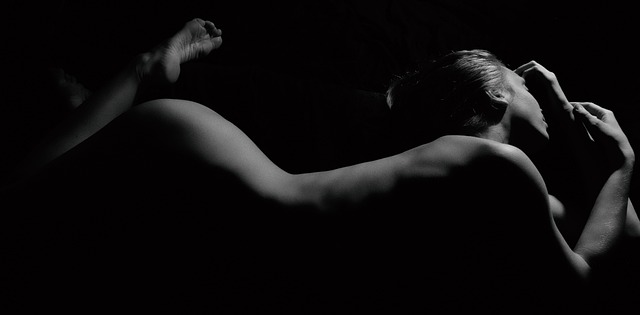Head-to-toe waxing leverages the understanding of the human hair growth cycle to achieve smoother skin. By targeting actively growing hairs in the anagen phase, this method delivers immediate results. However, it can induce a premature catagen phase, leading to temporary resting hairs. Post-waxing care involves promoting circulation and supporting the anagen phase with topical treatments, exfoliation, hydration, and gentle massage. Proper post-care is crucial for achieving healthier, softer hair regrowth after head-to-toe waxing.
“Uncover the science behind hair regrowth after full body waxing—a transformative process with nuances beyond the surface. This comprehensive guide explores the impact of head-to-toe waxing on the hair growth cycle, delving into the temporary nature of its effects. We dissect the scientific methods promoting post-wax hair regeneration and offer effective care strategies to optimize natural hair restoration. Discover expert tips for navigating the journey from depilation to rejuvenated skin and regrown hair.”
Understanding Hair Growth Cycle and Its Impact on Full Body Waxing
The hair growth cycle is a fascinating process that plays a significant role in understanding how our bodies regenerate and maintain their external features, including hair. This cycle consists of three distinct phases: anagen (growth phase), catagen (transition phase), and telogen (resting phase). When it comes to full-body waxing, which involves removing hair from the entire body, knowing this cycle is essential. During the anagen phase, hair grows rapidly, typically lasting several years. Waxing targets hair in the anagen stage as it provides the best results for removal. However, due to its intensive nature, full-body waxing can trigger the catagen phase prematurely, causing hair to enter a resting state temporarily.
Understanding this cycle helps explain why some individuals experience varying rates of hair regrowth after waxing. The telogen phase, where hair rests and eventually falls out naturally, typically lasts a few months. After waxing, many people notice thinner and finer hairs emerging during this phase, which is a normal part of the body’s healing process. As the anagen phase returns, new, stronger hairs start to grow, leading to potential regrowth within 2-4 weeks after waxing, commonly known as the “regrowth stage.” This knowledge empowers individuals to manage their expectations and implement post-waxing care routines to support healthy hair growth and minimize discomfort during the regrowth process.
The Process of Head-to-Toe Waxing and Its Temporary Effect on Hair
The process of head-to-toe waxing involves removing all the hair from the body in a single treatment, making it a comprehensive and efficient method for those seeking smoother, hairless skin. This extreme form of depilation is popular among individuals who prioritize a smooth and silky touch across every inch of their bodies. During a full-body waxing session, skilled technicians apply warm wax to the skin, ensuring it adheres to the hair follicles. Once set, the wax is swiftly stripped away, taking the hair with it, resulting in temporarily smooth skin.
While head-to-toe waxing offers immediate results, it’s crucial to understand its temporary nature. The removed hairs don’t grow back thicker or faster; instead, they typically re-emerge after a few weeks, appearing finer and softer due to the natural growth cycle of human hair. This is because waxing cuts the hair at the surface level, leaving the hair follicle intact, which is responsible for producing new hair over time.
Scientific Approach to Promoting Hair Regrowth After Waxing
The scientific approach to promoting hair regrowth after full body waxing involves a multi-faceted strategy that leverages our understanding of hair growth cycles and cellular processes. When hair is removed through head-to-toe waxing, it disrupts the natural cycle where hairs grow in phases: anagen (active growth), catagen (transition phase), and telogen (resting phase). To encourage regrowth, post-waxing treatments aim to stimulate the skin and support the anagen phase.
Topical applications of certain creams or serums containing ingredients like minoxidil or vitamin B5 can enhance blood flow to the treated area, providing essential nutrients for hair follicles. Additionally, strategies such as exfoliation and hydration help maintain a healthy skin environment, which is crucial for optimal hair growth. Even gentle massage techniques during application can improve circulation, further aiding in the regrowth process.
Effective Post-Wax Care Strategies for Optimizing Natural Hair Regeneration
After a full-body waxing session, proper post-care is essential to support natural hair regrowth and maintain skin health. The first step involves moisturizing; applying hydrating lotions or oils helps replenish the skin’s moisture barrier, reducing dryness and irritation often caused by the waxing process. These products also nourish the hair follicles, promoting healthier growth.
Additionally, gently exfoliating the treated areas can eliminate dead skin cells, unclogging hair follicles and allowing for smoother re-growth. Using a mild scrub or exfoliating gloves, you can remove any remaining wax residue while stimulating blood circulation to support new hair development. Remember, consistent moisture and gentle care during the regrowth phase are key to achieving softer, healthier hair following head-to-toe waxing.
Full body waxing disrupts the natural hair growth cycle, but with a scientific understanding and appropriate post-wax care, it’s possible to promote healthy regrowth. While head-to-toe waxing offers temporary smoothness, implementing strategies like targeted skincare, essential oils, and gentle exfoliation can enhance hair regeneration. By nurturing the skin and supporting the body’s natural processes, individuals can achieve smoother results for longer durations after each waxing session.
